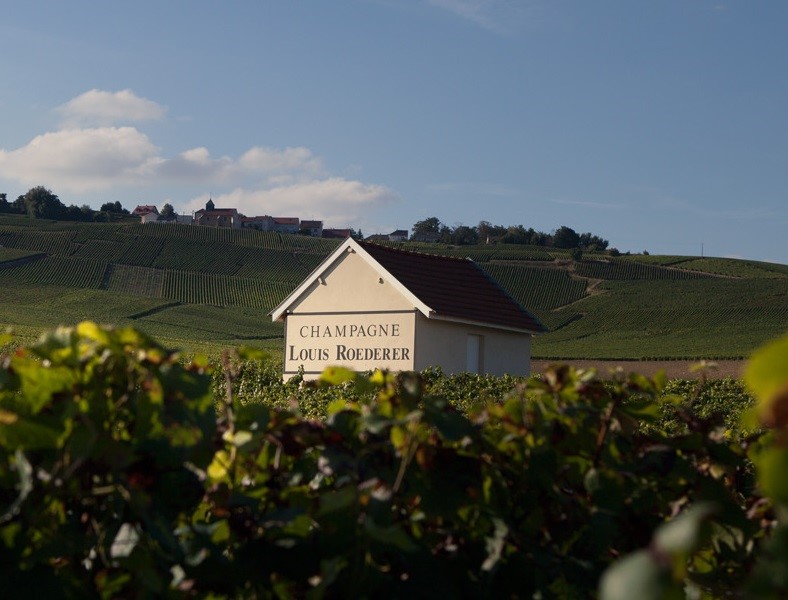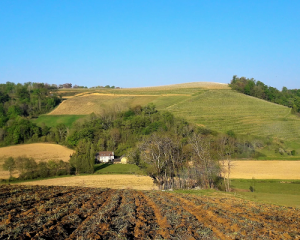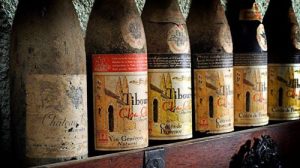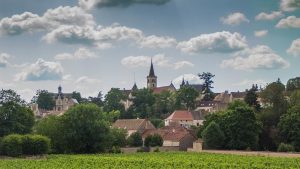
Maison Louis Roederer has something magic about it. That special kind of pizzazz you find at the prestigious fizz houses, where they craft unique, haute-couture champagne without ever turning away from what ties them to their region.
The origins of the House
In 1833, Louis Roederer inherited the Champagne house founded in 1776 by Mr. Dubois and his son. He set about developing the vineyards in order to master all stages of production, whereas at the time the practice of the prstigious houses was to buy grapes, as the fruit had little value. Thus, in 1845, he acquired 15 hectares in the grand cru of Verzenay, and from the 1870s, Louis Roederer champagnes were exported as far as the United States and Russia. It was in 1876 that the famous “Cristal” cuvée was created, especially for Tsar Alexander II. Several generations have succeeded one another, and it has now fallen to Frédéric Rouzaud to run this independent, family-owned estate.
Today, Roederer produces around 3.5 million bottles per year, making it one of the major players in the Champagne industry. To give you an idea, in 2021, 322 million bottles were produced in the entire Champagne region.
A large vineyard and sustainable practices
The Roederer vineyard is located mainly in the Grand Cru (70%) and Premier Cru areas of the Marne. The House takes care to respect its different terroirs, spread over 242 hectares and 410 plots of land, which are considered as nuanced as Burgundian ‘climats’. The vineyards are cultivated between the Reims mountain, the Marne valley and the Côte des Blancs, and the three main Champagne grape varieties are planted here: Chardonnay, Pinot Noir and Pinot Meunier.
Under the impetus of Jean-Baptiste Lécaillon, the charismatic cellar master who has been with the house for over 30 years, the vines are cultivated with the greatest respect for the soil. The house has been using a series of practices since the early 2000s in order to obtain the best quality grapes, convinced of the need to take care of its terroirs. Today, this is one of its strengths, impressive considering the size of the estate!
Of the 242 hectares covered by the vineyard, all are HVE 3 certified. More than half of the vineyard has been certified organic since 2021 (the other half of the vineyard is still cultivated in this way, without certification). Nine hectares of vines located in Cumières are also certified in biodynamic agriculture (Demeter). These specific parcels have been used in the blending of the famous Brut Nature.
A style of its own
The latest creation of the cellar manager, Collection 242, which came out in 2021, caused a bit of a stir in the world of wine. Usually, a ‘brut sans année’ (BSA, a brut cuvée without a specific vintage) represents the central identity of a champagne house, and the idea is for it to be pretty much identical every year.
In this respect, Roederer has done its own thing with the Collection 242, crafting a champagne that’s different every year. Jean-Baptiste Lécaillon decided in 2017 to create a multi-vintage cuvée that expresses the nuance of each harvest, year after year.
Collection 242 was first put on the market in 2021, and replaced the maison’s former Brut Premier. The 2021 version is made of over 50% 2017 harvest, 30% reserve (steel vatted blend of several vintages from 2012 onwards), and 10% oak-matured reserve wine.
Collection 243 has recently been released, and follows the same model, except it is made of mainly the 2018 vintage.
You can choose from a series of Louis Roederer champagnes at iDealwine




